Build a Career as a Professional Welder
Sixteen hundred years later, our progress beyond the ancient forge-welding process is evident. Anywhere you look there are bridges, skyscrapers, airplanes, and even cell phones, all thanks to welding.
As the American Welding Society states: “Welding is the secret ingredient that keeps today’s world together.
If so, then you’re in luck. In this guide, we’ll show you step-by-step everything you need to know about how to become a welder.
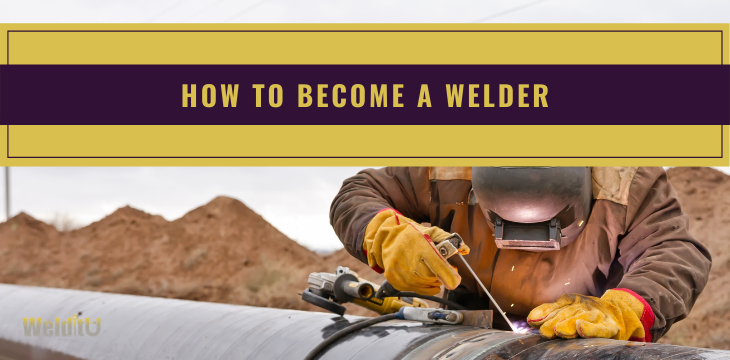
Requirements for becoming a welder
Although welding can be taught, you’ll want to be sure that you have a few fundamentals covered upfront.
1. Workplace skills
Like any other occupation, welding requires you to have some workplace skills. Especially when working with a team.
Excellent communication skills top this list. Next, is a willingness to learn and follow instructions. Followed by patience, confidence, concentration, accuracy, and an eye for detail.
As a welder, you’ll also have to be mentally healthy. You may find yourself working in confined spaces or outdoors in lousy weather. And expect to work overtime when needed to finish a project.
So, how well you handle stress will be a huge factor in determining the success of your welding career.
Self-motivation is a bonus. As you may have to freelance and look for work before fully establishing yourself.

2. Physical attributes
You’ll work with heavy tools, equipment, and materials as a welder—often in awkward positions. So, being in a good state of physical fitness will help.
Additionally, good eyesight and excellent hand-eye coordination are essential for running precise welds and operating power tools.
It’s a good idea to consult with your doctor to identify any underlying medical problems that could interfere with your ability to carry out welding tasks.
3. Education
Having a high school diploma or GED is usually required for entry into most welding programs and/or careers.
This can then be combined with on-the-job training (apprenticeship) or formal training in school.
4. Get your training to weld
When it comes to training to become a welder, you have about 3 options available at your disposal:
- A High school welding program
- Technical and vocational schools
- On-the-job/Apprenticeship programs
High school welding program
If you’re still in high school and are looking to take up welding as a career, then there would not be a better time to start.
First, see if your school offers a welding certificate program. These classes are often coordinated with a local technical school providing new welders a vital leg-up.
Your next step would be to take as many classes as you can in theoretical and applied subjects. These include:
- Physics
- Chemistry
- Math
- Technical Drawing
- Metallurgy
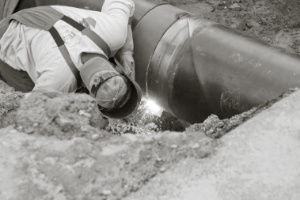
Physics and Chemistry, for instance, will help you learn about chemical reactions and concepts such as heat transfer—both of which are crucial for any future welder.
Welders also need to read blueprints, calculate the pressure of gases, measures sizes and so need to have a practical grasp of basic math skills.
Welders are essentially builders. Learning to perform technical drawings would give you an edge in studying blueprints and related symbols.
Metallurgy study would help you understand the different properties of metals. An obvious benefit to any welder.
Remember, taking the right classes in school helps in building a strong foundation for a successful career in welding.
“…there is a massive shortage of skilled welding professionals in this country.”
—American Welding Society (AWS)
Technical and Vocational schools
Better technical and vocational schools offer outstanding welding programs that include job placement assistance. They can help you to start making money soon after training.
Welding school costs vary a lot, so do plenty of research. However, when looking for a school, search for institutions that focus more on training you to pass the welding certification tests, rather than just making you an entry-level welder.
During your research, ask questions about the programs they offer, job placement, and even try and talk to past graduates to see how well they’re fairing.
Based on these criteria, here are some top-ranked schools in the U.S.:
- Tulsa Welding School: Located in Jacksonville FL, with a solid welding program
- Hobart Institute of Welding Technology: Located in Troy OH, they also offer smaller and more specific training modules
- Lincoln Welding Training: Located in Cleveland OH, you also get the opportunity to sample their motorsports welding program and learn different aspects of welding from it
- American Welding Society: Located in Miami FL
- Welder Testing and Training Institute: Located in Allentown, PA
- Central Louisiana Technical Community College: Located in Alexandria, LA
- Apex Technical School: Located in New York
- Andrews University: Located in Berrien Springs, MI
- Boise State University: Located in Boise, ID
- Vincennes University: Located in Vincennes, IN
And don’t worry if you aren’t located near any of these schools. There are many good schools spread across the country.
We found this outstanding school locator. It can put you directly in touch with leading welding schools near you.
The tool is free to use, but we do get a small fee for everyone we help to become a welder, so thanks for checking it out!
Apprenticeship programs
If you’re looking to earn a few bucks while also perfecting your skills, then an apprenticeship might be the solution for you.
The best form of apprenticeship would be through a formal program, mostly offered by welding companies.
Under them, you begin by doing entry-level work as you rise through the ranks and get the opportunity to learn more skills. Ideally, most apprenticeship programs last for 3 years. By then, you’ll have risen to the top journeyman’s rank.
The best place to start your search when looking for a program would be the U.S. Department of Labor’s website.
If you’re flexible and able to move, scholarships on the AWS scholarship page will save you cash as organizations and unions in areas with a shortage of welders are willing to train more.
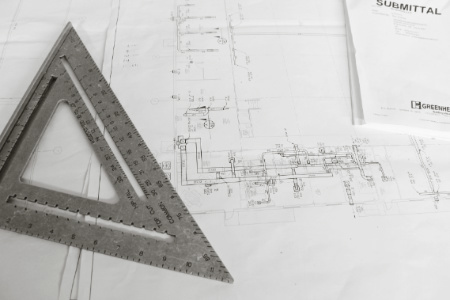
How much time does a welding school take?
As training requirements vary from one school to another, so does the length of time for study.
If your target is getting a diploma in welding, then a trade/vocational school would be your next destination. If you’re thinking of getting an associate’s degree in welding, then you’d enroll in a community college.
Most welding schools usually offer at least 3 to 7 different types of welding programs, depending on what is taught. Some of these include:
- Combination welding – This course helps you learn both structural and pipe welding. Its main aim is to train welders who can create both machine parts and motors.
- Basic welding – In this course line, you get to learn about the basic welding processes such as GMAW, SMAW, GTAW, and FCAW. We’ll cover these later in the article. These processes are what form the base of your welding career.
- Reading Blueprints – Considering their importance in welding, learning how to read blueprints is a no-brainer. Luckily, you can also pair this program with others such as metallurgy and welding theory.
- Welding certifications – These tests will be the most important in your journey to becoming a certified welder. An institution that offers these should be high on your priority list
- Exotic welding – If you have time and want to boost your resume, learn how to weld metals other than steel. Some of these exotic metals include Aluminum, Titanium, and Magnesium.
- Welding underwater – This course not only sounds cool, but it also makes you a certified diver and salvage expert. It takes about 7–12 months to complete this unique program
Ideally, it takes about 6–18 months of learning and practice to refine your skills and become a competent welder. That can also translate to about 3-4 semesters.
Attending school on a part-time or full-time basis also affects how long you’ll be in school. Prior welding experience and/or apprenticeship work could meet prerequisites to some courses, possibly shortening your study time.
Additionally, some schools have been known to offer highly intensive, accelerated learning programs that complete in as short as 18 weeks.
However, a general rule of thumb is to take your time during the learning process. The more time you spend learning and practicing, the better you get.
Remember, the more certifications you have, the more marketable you’ll be once you hit the job market.
“…the need for welders is regional and is strongest in industry segments that serve construction in infrastructure, energy, and transportation sectors.”
—SOLVING THE SKILLED WELDER SHORTAGE, constructionequipment.com
5. Get your welding certifications
To increase your chances of landing a well-paying job, you have to pass a welder qualification test. Conducted by a certified welding inspector, these tests measure how skillful a welder you are.
Certifications prove that you’re skilled enough to be working under your specified code. Since there’s no certification covering all types of welding, they are determined based on metal thickness, welding processes, and metal types.
During the certification test, you’re essentially required to:
- Follow instructions and weld the metals provided by the inspector.
- After welding the metal, cut it as stated in the instruction manual and prepare for quality testing
- Test your welded and cut materials according to the procedure and wait for the inspector to carry out a form of inspection.
The 3 largest organizations in the U.S. having certified welding procedures are:
- The American Petroleum Institute (API)
- The American Welding Society (AWS): The largest certifier of welders
- The American Society of Mechanical Engineers
In the welding field, you can either choose to weld on plate or pipe. Welders who weld-on plate are usually referred to as “structural welders” while those who weld-on pipe are rightly called “pipe welders.”
Which are the main welding disciplines?
Although there are many welding procedures, the 5 most widely used are:
- Gas Metal Arc Welding (GMAW/MIG)
- Shielded Metal Arc Welding (SMAW/ Stick Welding)
- Gas Tungsten Arc Welding (GTAW/ TIG)
- Flux Core Arc Welding (FCAW/ Wire Wheel Welding)
- Oxy-Acetylene Welding, Brazing and Cutting
Gas Metal Arc Welding (GMAW/ MIG)
Of all the welding processes, GMAW/MIG welding is considered to be one of the easiest. Why so?
Because the process is semi-automated, you don’t need to control the filler material, or the power output while welding. The welding machine handles these responsibilities so that beginners can work on their skills.
The MIG term stands for Metal Inert Gas welding, meaning inert gases such as Argon are used in shielding the weld. However, MIG gas blends include active gases like carbon dioxide (CO2).
This use of GMAW is widespread in manufacturing processes as well as in sheet metal work.
However, since the welds are affected outdoors by wind, it is a process that usually takes place in the protection of fabrication shops.
Flux Cored Arc Welding (FCAW)
Introduced in the ’50s, FCAW shares a lot of similarities with GMAW in that both are semi-automated and have very high production rates.
While GMAW’s weld bead is shielded by a blanket of gas, FCAW uses a hollow wire with flux in the center. This flux protects the weld from the inside out. As a result, FCAW is less affected by wind and a good choice for outdoor work.
Similar to GMAW, FCAW is a straightforward process to master given enough practice. It’s also very productive, leading to its increased use in the shipbuilding industry.
The major drawback to Flux Cored Arc Welding is that it cannot be used in the welding of exotic non-ferrous metals such as aluminum.
Metals that can be welded using FCAW include; cast iron, stainless steel, and carbon steel.
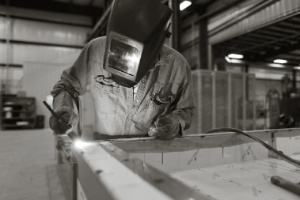
Shielded Metal Arc Welding (SMAW)
Also referred to as “stick welding,” because the welding electrode is stick-shaped.
Unlike GTAW, SMAW welding works well with thicker metals such as; Steel, Chrome, and Nickel based alloys.
Some of the common uses for SMAW include:
- The fabrication of structural steel
- Shipbuilding and repairs
- Tractor and farm equipment repairs
- Power plant construction and the likes.
For SMAW, how good you become as a welder entirely depends on the number of hours of practice. It’s possible to learn the basics of the process in as little as 5 hours.
However, if you’re looking to make a career out of it, expect at least 18-24 months of learning and training to get you to that professional status.
Gas Tungsten Arc Welding (GTAW/TIG)
Although formally called GTAW welding, the most commonly used term for this type of welding is TIG. This stands for Tungsten Inert Gas welding. However, some old-timers would refer to it as Heliarc welding given its history with helium gas.
Its most common use is in the welding of metals other than steel and also where more precision is required.
Although the quality of welding is one of the highest quality, it is usually a slow process.
Oxy-Acetylene Welding (OAW), Brazing and Cutting
The “Oxy” part of Oxy-acetylene may sound familiar, and yes, you guessed it right, it stands for Oxygen.
For the gas welding process, oxygen is combined with acetylene for one reason: MORE HEAT.
The flame temperature produced by the gas combination is a whopping 6000 degrees Fahrenheit!
Some of the advantages of this process are:
- You can switch from welding to cutting depending on the tip you use.
- The flame can be used in the cutting of large pieces of metal
- The welding kit is very user-friendly compared to others
- Unlike the rigs in other processes, no electrical power is needed, so the entire outfit is quite portable
- The total running and equipment cost is cheaper than the other methods.
This versatility enables the process to be used in various functions such as:
- Welding of thin materials and bridging large gaps
- Brazing on aluminum, stainless steel, and copper
Although gas welding stands out from the rest, it does face some limitations. As a manual process, it requires a high level of operator skill. The heat and filler material must be regulated over a variety of materials and thicknesses. Also, it requires fluxes in the welding of most of the elements except for low carbon steel.
Other than that, it is one of the most used processes to date.

Which industries employ welders?
With the industrial nature of the modern-day world, a welder can find work in many niches.
“Metal is all around you and it needs to be welded.”
—Samantha Farr, Women Who Weld
However, the top 9 industries employing welders at the moment include:
- Electric Power Generation, Transmission and Distribution
- Scientific and Technical Services
- Natural Gas Distribution
- Pipeline Transportation of Crude Oil
- Pulp, Paper, and Paperboard Mills
- Industrial Maintenance and Repair
- Architectural and Structural Construction
- Motor vehicle Body and Trailer Manufacturing
- Agriculture and Mining Machinery
What do welders do?
Although by definition welding generally refers to permanently joining two metal parts, different types of welders perform a wide variety of tasks that can be quite different. Let us take a look at some of them.
General welders
These skilled craftspeople operate either manual or semi-automatic welding tools to create a wide variety of welds. Depending on the industry, general welders may need to pass qualification tests demonstrating their skills meet a specific code or standard.
The use of semiautomatic tools means the device controls at least one of the welding conditions, leaving the welder to perform the rest.
Remember the Gas Metal Arc Welding (GMAW) process? It serves as a perfect example of a semi-automated process. As the welder holds the torch, the welding machine continuously supplies the current, wire, and shielding gas to the joint that is being welded.
Tack Welders
The tack welder will align parts and make small “tack” welds to hold pieces in place during welding. Part of the skill in this job is making the welds strong, but small enough not to interfere with the final assembly weld.
Welding Operators
Since robots and other technologically advanced machines handle the bulk of manufacturing and assemblies nowadays, welding operators are needed to control them and ensure they perform what they were meant to do.
Using knobs and computers, these operators load material pieces into these machines for the bonding process. Before this, however, they have to inspect and test these materials to ensure they meet every specification.
In case they detect any problem with the machinery, you guessed it, they also stop them and correct any mechanical issues.
After the job is done, they record the operational information and write reports on the production line.
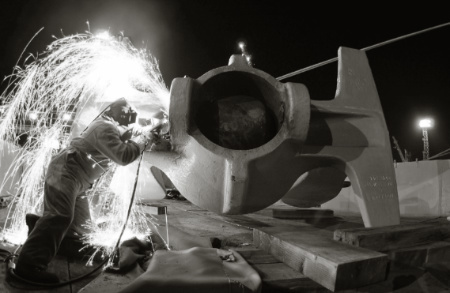
Welder Assemblers/Fitters
True to their definition, welder assemblers assemble welds, frames, and any other components of equipment before the final welding takes place.
Assemblers are capable in that they can use manual tools, robotically controlled machines, or even their bare hands to complete tasks.
During the assembly process, they first have to read all the schematics and blueprints provided to understand them fully. They then align all the provided components so that everything sits in place.
Using regular tools or robots, they assemble the products. To ensure everything is in order and functioning correctly, they carry out thorough quality control checks.
After the entire process is complete, they clean and maintain all machinery used in the assembly process.
Welding Shop Supervisors
As with any other company, there has to be an “overseer” who ensures the work is done right, on schedule, and within the budget. Enter the welding shop supervisors.
According to one American Welding Society report, a Welding Supervisor’s oversight could reduce welding production costs of a single welder by $17,000 in a single year alone! All without reducing production quantity and quality.
Such is the importance of the role. A welding supervisor also bears the added responsibility of ensuring the workplace is always safe for use to prevent unnecessary accidents.
Other than handling the safety and economics of the shop, supervisors are tasked with training the welders in new technological trends to improve the overall weld quality in the long run.
Welding Shop Owners
Welding shop owners are often highly skilled and knowledgeable welders who prefer to work for themselves—what many welders aspire to achieve during their careers.
An operation can be a one-man shop, a few trucks, or a multimillion-dollar operation employing hundreds of workers. A welding business can be a specialized fabricator, a general repair and maintenance activity, or a subcontractor of manufactured items.
Shop owners are responsible for employing both new and practicing welders. Everybody’s got to start somewhere, and the shop owners generally act as that stepping stone for most careers.
Welding Salespersons
Welding salespeople/representatives serve as a channel for the transfer of information concerning new welding processes and technologies. This position can improve productivity and quality in the entire welding process.
Given their links to manufacturers and the consumer, they reliably offer technical support to all parties on the availability and use of new products and services.
Which welding jobs require specialized skills?
Although welding skills involve certain basic processes, some welding fields require specific training if you ever think of pursuing them.
Welding Inspector
Becoming a certified welding inspector (CWI) can be a step up into a rewarding career. You may think an inspector’s job is just to inspect welds and give certifications.
Surprisingly, there’s more than meets the eye.
Welding Inspectors perform an essential role of reviewing building and welding plans, equipment calibration documents, and welding materials to ensure everything is up to code.
Plans for buildings, bridges, and even vehicles need to pass through CWIs before approval.
Other than document review, Inspectors are tasked with ensuring all welding work in facilities complies with local and federal safety regulations to prevent liability.
In addition to this, inspectors are also supposed to inspect the pre-welding environments in facilities, monitor the entire welding process, handle qualification records and oversee non-destructive testing of welds.
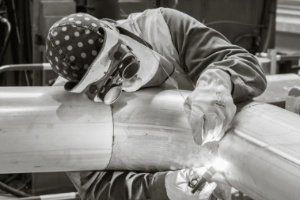
Welding Engineers
Welding engineers are essentially welders who are trained to develop techniques, processes, and procedures for other welders to follow.
In this way, engineers alter the processes to make tweaks and improvements to them.
Unlike regular welders, welding engineers are also required to supervise, delegate, and document work done for future analysis.
Since the engineers are often in administrative roles, they are required to have sat the AWS Certified Welding Engineer exam while also holding at least a Bachelor of Science degree in Engineering.
Holders of associate’s degree can also be engineers but are required to have at least 10 years of working experience.
Underwater Welding
Underwater welding might just be the coolest of all welding practices.
Before becoming an underwater welder, you could pursue diving first then focus on welding. However, some schools provide lessons for both concurrently.
Underwater welders deal in all aspects from construction to repair. They are mainly hired by ship and boat companies for work on their vessels.
However, these welders can also work for offshore oil drilling rigs, docking facilities, the armed forces, sub-sea habitats, and even mining companies.
Water welders are required to be in excellent condition both physically and mentally because of the dangers of underwater welding.
Pipeline Welder
Pipeline welders specialize mostly in the petrochemical industry. Unsurprisingly, it is one of the most lucrative sectors for welders to work in.
These welders mainly work on oil and gas rigs in the mainland, building the piping system while also carrying out repair and maintenance.
They can also seek employment in offshore rigs and refineries carrying out the same tasks.
In terms of safety, however, refineries usually offer the best working conditions. Gas rigs and offshore pipelines involve more hazardous working conditions, such as exposure to toxic fumes and lousy weather.
Are there employment opportunities in welding?
According to AWS: “…there is a massive shortage of skilled welding professionals in this country. According to several industry estimates, the welder deficit is set to eclipse 200,000 by 2020, and hit nearly 375,000 by 2026.”
And a ThomasNet article explains: “Both the welding and utility industries have failed to actively attract prospective job candidates … Currently, the average age of a worker in either of these two industries is 55 and above, and with many workers soon to retire, these sectors stand to face a shortage of more than 300,000 workers in less than a decade.”
Yes, now is a fantastic time to become a welder!
News report about the welder shortage:
How Much Does a Welder Make?
The median pay for welders in 2017 stood at $40,240 per year, which translated to earning about $19.35 per hour. Keep in mind that this includes lower-paying cutting, soldering, and brazing jobs. Still, this rate is above the national average.
Remember, as stated earlier, pay majorly depends on the level of certification and also the type of industry you choose to work in. Pipeline and electric generation industries currently pay the best rates.
Other than that, different states offer differing salary levels. The top 6 paying states also with high employment levels include:
- Texas
- California
- Pennsylvania
- Louisiana
- Ohio
- Alaska
Given the need for more experienced welders on a national scale, salaries are expected to grow over the next few years.
Final Thoughts
Hopefully, you’ve learned something new about the exciting world of welding.
So, what do you think? Does becoming a welder suit your goals and career ambitions?
If the answer is yes, get to it!
Feel free to use our school locator app to help you find the perfect school for you today!

